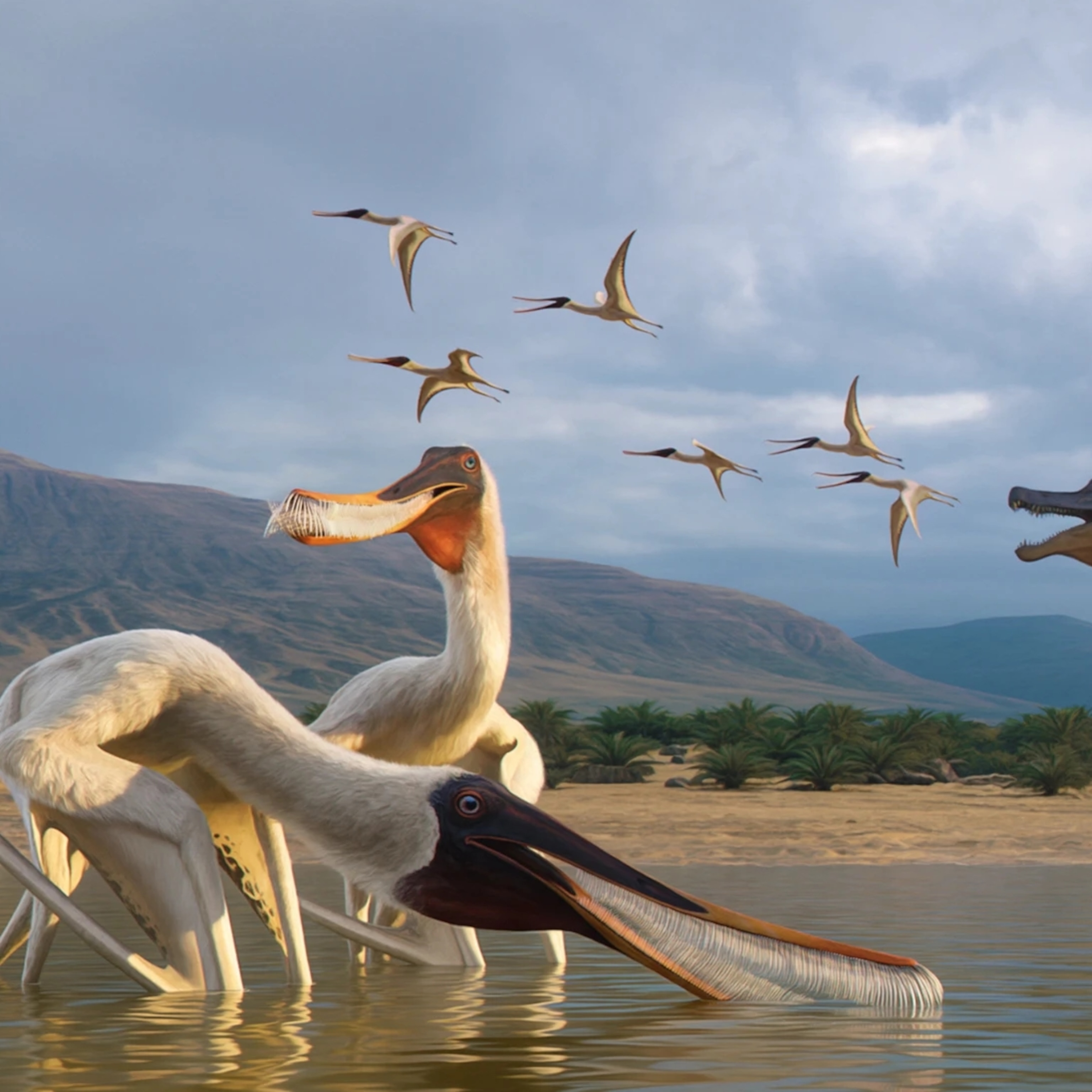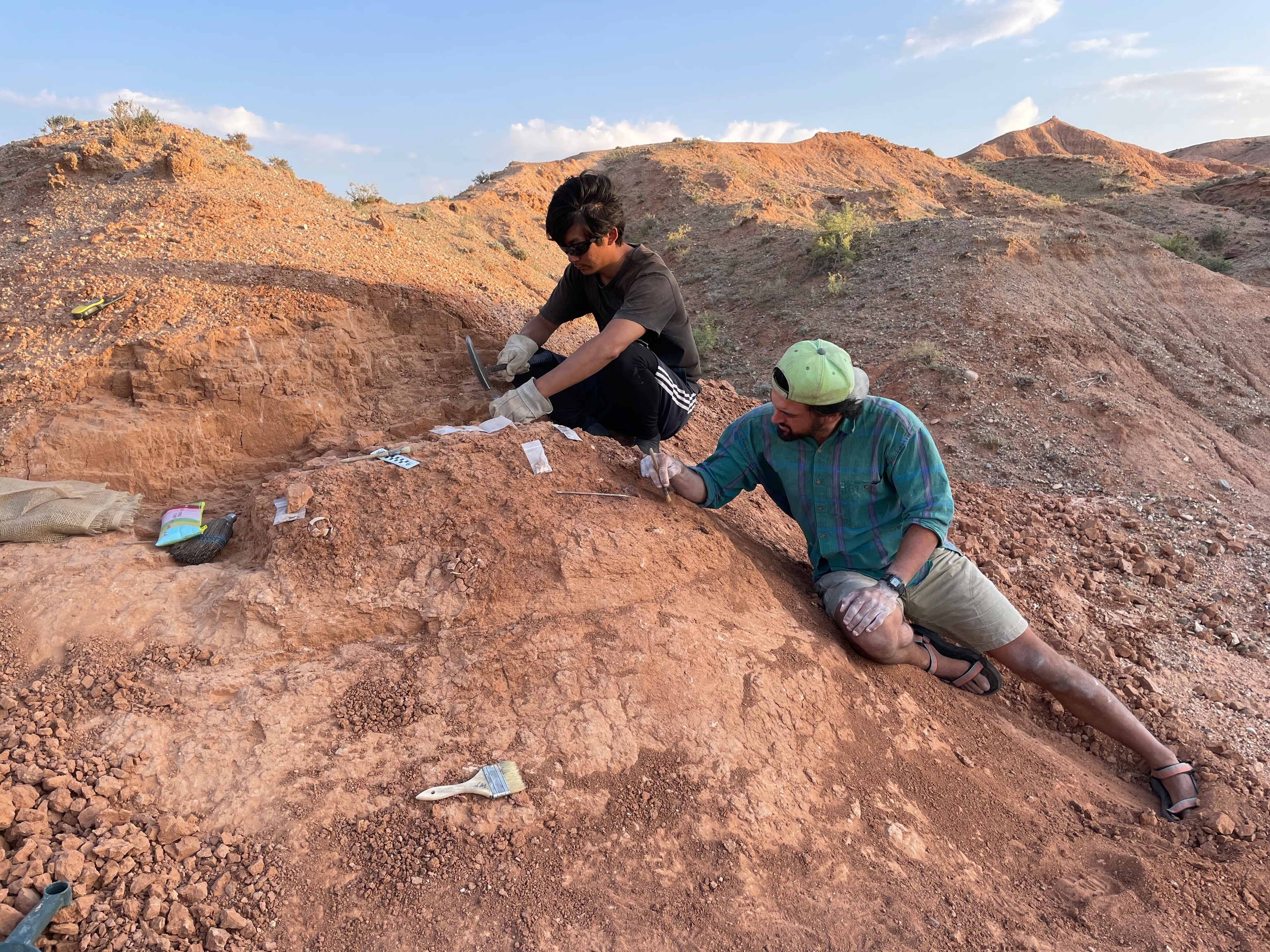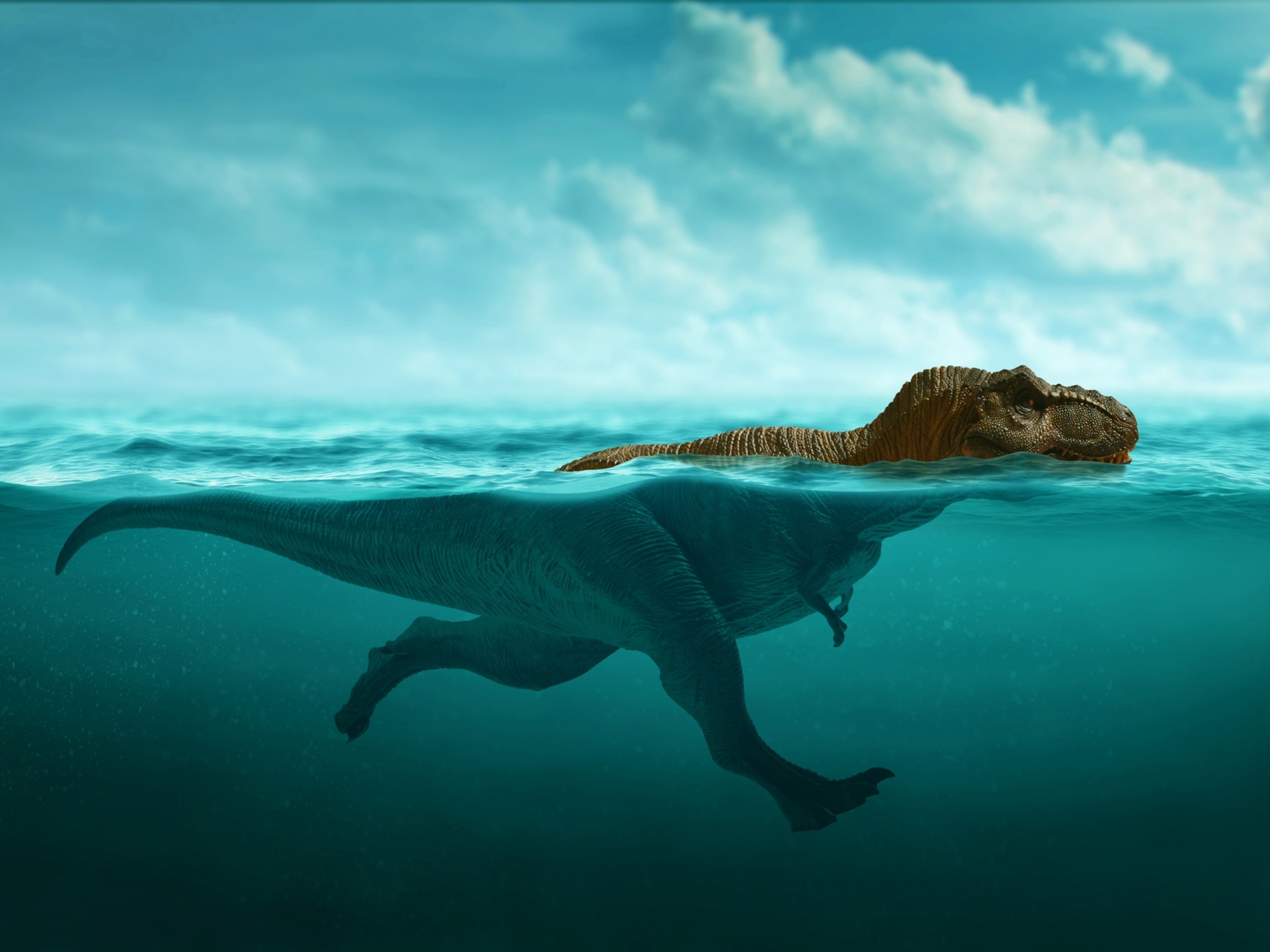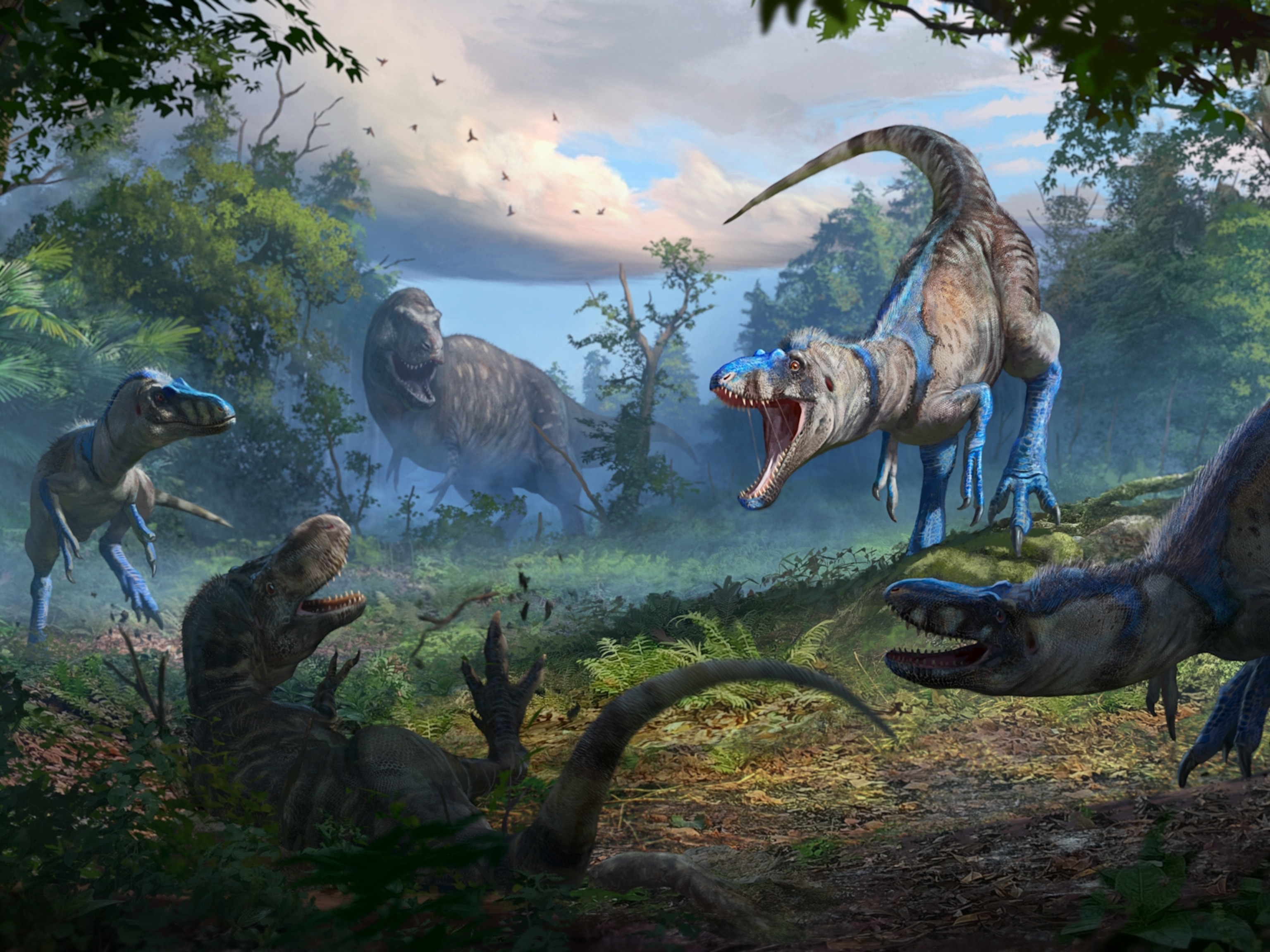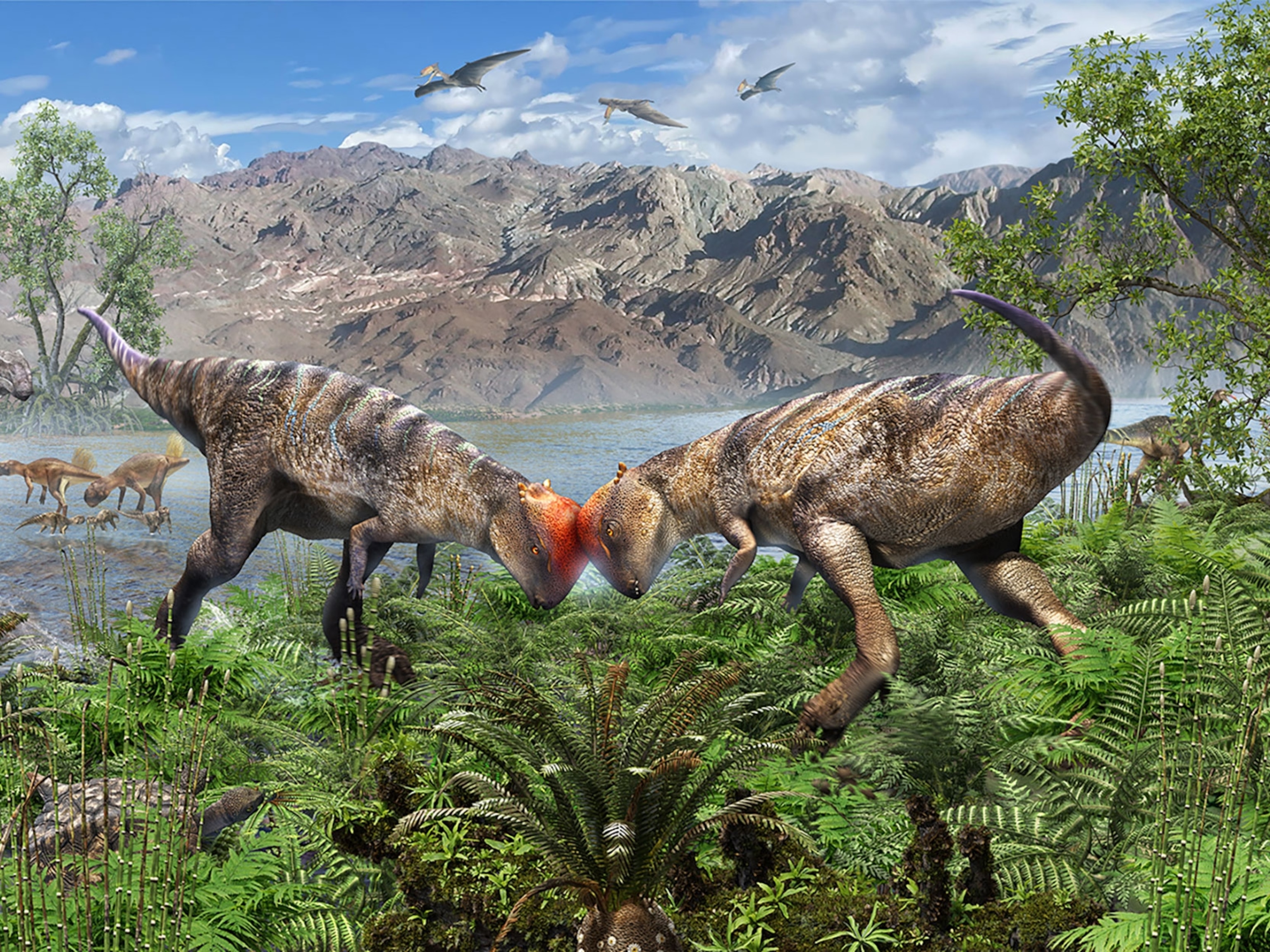About a hundred million years ago, a dinosaur more than 50 feet long prowled Morocco's ancient coastlines, using its croc-like skull to feed on fish and other animals. But scientists have debated how exactly this predator, called Spinosaurus aegyptiacus, pursued its prey in the water.
In 2014, a blockbuster paper by National Geographic Emerging Explorer Nizar Ibrahim argued that Spinosaurus spent most of its time in the water, perhaps swimming—or even diving—in pursuit of its aquatic prey, the first known dinosaur to do so. Now, a new study claims that despite its taste for fish, Spinosaurus may not have been a great swimmer after all.
The analysis, published in PeerJ on Thursday, used computer simulations to determine how the creature would have floated. The results suggest that Spinosaurus would have been too buoyant to dive easily after its prey, and because of its top-heavy, slender figure, it would have been prone to tipping onto its side.
“I've pointed out what I think are problems to [Ibrahim's team's] hypothesis, and if they can't counter them with new evidence, then their hypothesis is—mixing my metaphors—dead in the water,” says Don Henderson, curator of dinosaurs at the Royal Tyrrell Museum of Palaeontology in Alberta, Canada, and the study's author. “Science is said to be self-correcting, so here's some of the self-correcting in action.”
While not the final word on Spinosaurus's seaworthiness, the findings should renew debate over how the largest known carnivorous dinosaur satisfied its massive appetite.
“The work seems pretty convincing that Spinosaurus doesn't show a body form particularly well-adapted for diving and swimming underwater,” says University of Maryland paleontologist Tom Holtz, who wasn't involved with the study.
Virtually Unsinkable?
Regardless of how the dino maneuvered in water, Spinosaurus and its relatives, called spinosaurs, relied on aquatic ecosystems. Fish scales have been found in spinosaurs' stomachs, and the dinosaurs' bones appear in areas that were once coastlines and riverbeds.
Spinosaur jaws closely resemble those of today's fish-eating pike conger eels; both animals' mouthparts taper and then fan into distinctive “rosettes” of conical teeth, making them well suited to catching slippery fish in dim waters. Most tellingly, the chemical signatures of spinosaur remains suggest that the animals spent much of their lives in water, like today's crocodiles.
“We've seen a ton of really exciting papers adding more evidence to a truly water-loving Spinosaurus,” says Ibrahim, a paleontologist at the University of Portsmouth. “The details of how the animals moved around the water and caught prey, that's obviously a trickier part of the scientific research.”
To put Spinosaurus through its nautical paces, Henderson built a 3D model of the dinosaur based on Ibrahim's 2014 reconstruction of the dinosaur's skeleton. He paid special attention to Spinosaurus's dorsal sail, which weighed hundreds of pounds and extended several feet tall. To validate his method, Henderson built models for alligators and emperor penguins, too, which floated in his simulations as they do in real life.
First, Henderson checked whether a floating Spinosaurus could keep its head out of the water. His simulations said it could, but no better than other related dinosaurs, including T. rex and the spinosaur Baryonyx. He also found that Spinosaurus would have been “unsinkable”: Even accounting for its denser bones or scenarios where Spinosaurus could have purged three-fourths of the air from its lungs, it still would have struggled to dive underwater.
Henderson's model also showed that Spinosaurus's center of mass would have been above and between its back feet, meaning it could have walked on its hind limbs competently. That's in contrast to Ibrahim's findings, which had placed the dinosaur's center of mass farther forward, suggesting that the animal would have been less comfortable walking on land without dropping to all fours.
That said, Spinosaurus's hindlimbs were unusually small, making its stride a bit like a dachshund's compared to that of its relatives. “They are short, stubby legs, by any metric,” says Holtz. “Spinosaurus was not cruising the countryside.”
Next, Henderson looked at whether Spinosaurus would have been steady in the water. He modeled cross-sections of Spinosaurus and an American alligator, which he then knocked to one side by 20 degrees. Like a partly tipped kayak, the alligator cross-section rocked back and forth until it eventually self-righted. However, the Spinosaurus cross-section tilted over to the side and stayed there.
“All sorts of semiaquatic animals today—turtles, marine mammals—all self-right; they're not constantly fighting to keep things upright,” says Henderson. “Being upright was not [Spinosaurus's] natural position.”
Life Aquatic
In a phone interview on Thursday, Ibrahim welcomed Henderson's study, but he also expressed some concerns.
For one, he says that Henderson didn't ground-truth his models with the bones themselves, a collection which Ibrahim co-curates. He adds that, like all of paleontology, computer modeling of ancient animals faces its own sources of error. Future models will benefit from more fossils; Ibrahim says that additional Spinosaurus bones have been found and are being formally described.
“It's always good to use modeling techniques, but we need more of this, and we need more modeling that's actually based on the fossils,” he says. “At the end of the day, the truth lies in the bones, not in a computer.”
Holtz adds that Spinosaurus may well have been in the early stages of evolving its semiaquatic lifestyle. “You don’t necessarily have the equipment you want to do the behavior when you start doing that behavior,” he says. These adaptations develop over time.
For his part, Henderson imagines the animal like a grizzly bear: a fish-eating machine that would have had no problem walking into and out of the shallows.
David Hone, a paleontologist at Queen Mary University of London, adds that swimming is by no means the litmus test for a life aquatic.
“Herons aren't very good at swimming, but they spend most of their time knee-deep in water, wading around the edge of rivers,” he says. “ 'Semiaquatic' might be a push, but you're definitely talking about an animal whose ecology is fundamentally linked to water.”


